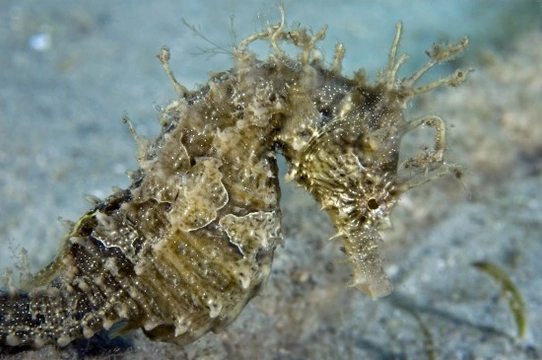Pets
Pets for studWanted petsBreedersAccessories & services
Knowledge hub
Support
Support & safety portal
Caring for Lined Seahorses (Hippocampus erectus)
The lined seahorse (Hippocampus erectus) is native to the Western Atlantic ocean, ranging right down from the north of Canada to the Caribbean sea. They can usually be found in costal waters around coral reefs, and other structures such a piers and breakwaters.
They are also one of the most commonly kept species in the marine aquarium trade, and will usually happily breed in captivity. In the wild, the lined seahorse is listed as a vulnerable or threatened species, due to the degradation of its natural habitat and its popularity as a souvenir and for use within folk medicine. For this reason, domestically kept lined seahorses must be bought from captive-bred stock, and not caught and imported from the wild.
Seahorses are small, highly appealing little animals, and it is entirely possible to keep the lined seahorse within a domestic saltwater aquarium, providing that you have enough time to dedicate to their care, and are prepared to do your research first. Because the seahorse is a slow-swimming fish that requires only a gentle water flow and that is often the prey of other fish and aquatic animals, it is not recommended to add lined seahorse to an existing marine set-up. You should plan to dedicate an entire tank system to care of your seahorses, if you wish to go ahead.
In this article, we will look at the basic housing and care requirements of the lined seahorse, to get you started. Read on to learn more!
The appearance and traits of the lined seahorse
Like other seahorses, the lined seahorse doesn’t look at all like most other fish! With their deep chests, equine-looking heads and curling tails, the lined seahorse swims upright rather than horizontally, which sets them apart from most other fish. They are small fish that rarely reach longer than 6” from top to tail, and their bodies are covered with bony plates in a ring structure, rather than scales.
The tail of the lined seahorse is prehensile, meaning that it can grip and cling onto things with it, and seahorses spend a reasonable amount of their time hanging on to objects in the water, rather than freely floating around.
The lined seahorse may appear to have a lined body pattern, but it may also have dots on the tail, or a “saddle” pattern on the back.
Housing a lined seahorse
To keep a couple of lined seahorses, you should use an aquarium that holds a minimum of 150 litres of water, and that provides plenty of room for swimming around in a well as lots of things to cling on to, and quiet hiding spots.
Maintaining a saltwater environment is also something that you will need to learn about in detail, in order to understand the specific gravity, water temperature and pH that you will need to maintain to keep your seahorses thriving.
Seahorses are peaceful little fish, and are highly unlikely to attack other fish or aquatic residents; however, as they are peaceful and slow-moving in the water, it is not advised for the first-time keeper to try to keep them with other fish, as they may be viewed as prey!
What do lined seahorses eat?
Successfully feeding lined seahorses can be challenging, as they will sometimes only accept live food. Their staple diet consists of the mysid shrimp, which can be bought and cultured live to feed at home, or can be purchased freeze-dried if you can convince your seahorses to accept it! Starting your seahorses on dried food when young is the best way to ensure that you do not end up with a tank full of fussy eaters!
Seahorses are relatively time-consuming to feed, as they need to be fed several times per day, and have their food available for 20-30 minutes before removing anything that is uneaten. This can mean that arranging care for your tank if you are out at work all day or going away on holiday can be challenging!
Seahorses, mating and breeding
Just as the adult seahorse is beautiful, regal and fascinating, breeding seahorses and watching your fry grow can be even more rewarding. Seahorses are monogamous and mate for life, something else that is very life-affirming and elegant to observe. After the death or removal of one of the couple, the remaining partner will be very slow to replace them, or possibly go through the rest of their life alone. When the light first comes up in the morning, the couple will perform a distinctive seahorse “dance” for each other, and they also use sounds to communicate with each other in the water. When mating or preparing to mate, these sounds become greatly amplified, and almost continuous.
Seahorses breed by laying eggs, which are then carried in a brooding pouch on the tail of the male fish, where they are fertilized. The female lays the eggs, but the male carries them to term, something else that is unique about this fascinating little species!
Seahorses breed relatively easily in captivity if the situation and living conditions are right, and so it is not outside of the realms of possibility that your own lined seahorses might ultimately breed!



